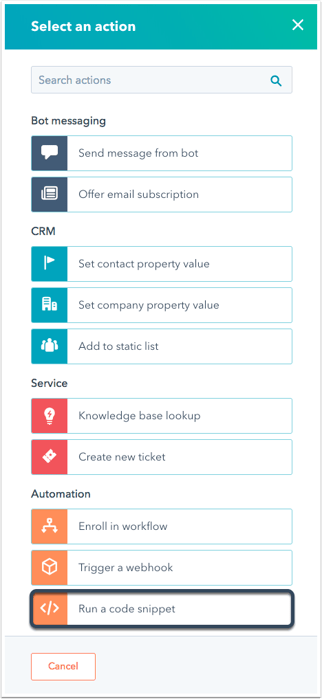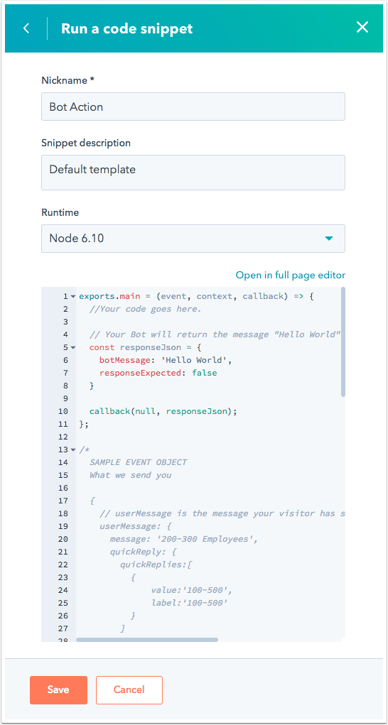Ejecutar fragmentos de código en bots
Al crear o editar un bot, puedes agregar un fragmento de código haciendo clic en «+» para agregar una acción como normalmente lo harías. En el panel de selección de acción, haz clic en «Ejecutar un fragmento de código»
A continuación, asígnale un apodo a tu acción. En el panel de edición de códigos, verás nuestra plantilla predeterminada para Node.js 10. x. Los detalles del objeto «event» y los formatos de objeto de respuesta posibles se detallan a continuación.
El código se activará cuando se alcance la acción guardada en una conversación.
Hay tres aspectos principales que debes tener en cuenta al trabajar con fragmentos de código:
- La función
exports.main()se llama cuando se ejecuta la acción del fragmento de código. - El argumento
eventes un objeto que contiene detalles para el visitante y la sesión de chat. - La función
callback()se utiliza para pasar datos al chatbot y al usuario. Se debe llamar en la funciónexports.main.
El objeto event contendrá los siguientes datos:
La función callback() se utiliza para enviar datos al bot. El argumento debe ser un objeto con los siguientes datos:
Los fragmentos de código en los bots deben terminar en un lapso de 20 segundos y solo usar 128 MB de memoria. Exceder estos límites ocasionará un error.
Gracias por tus comentarios, son muy importantes para nosotros.